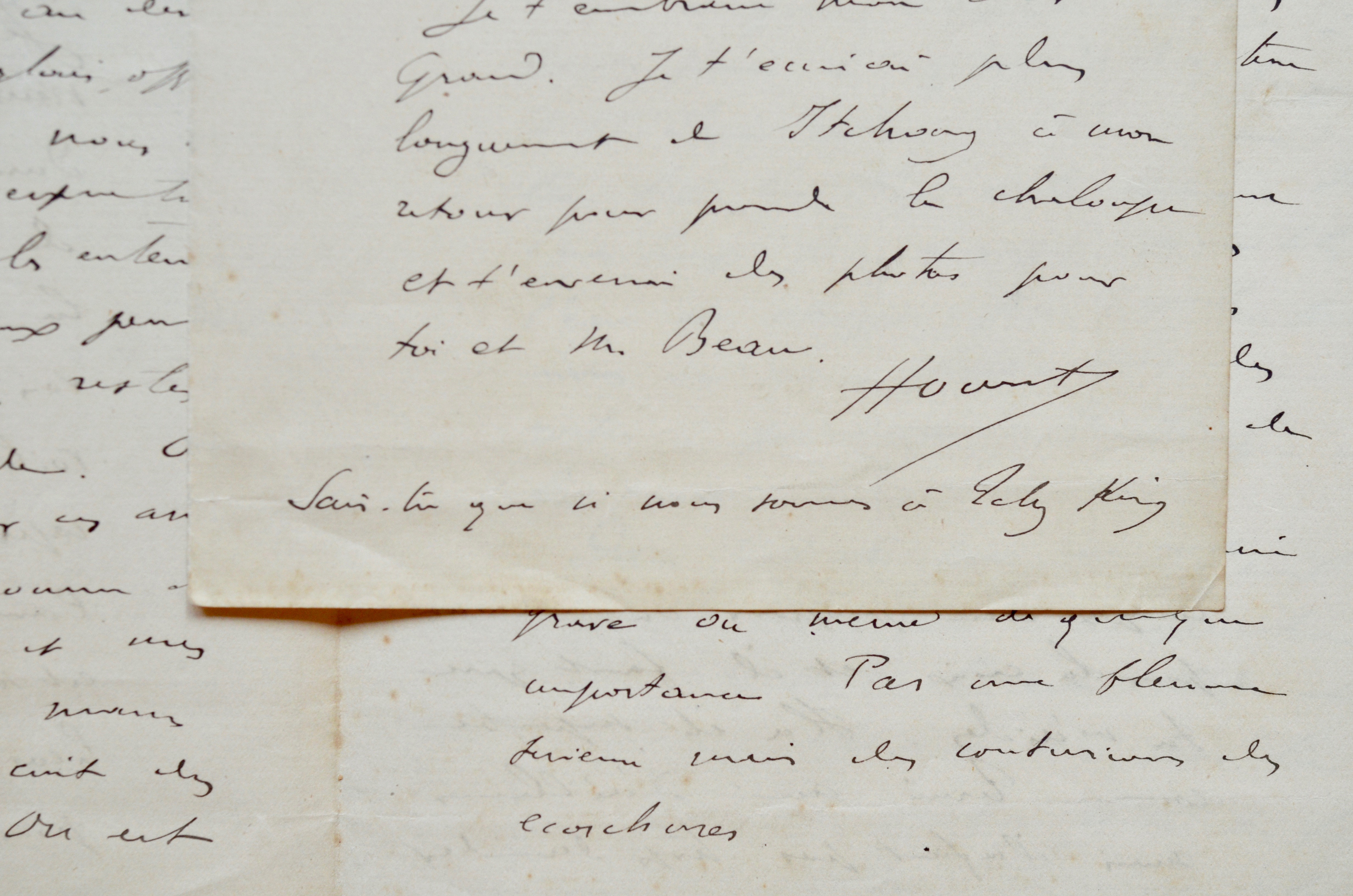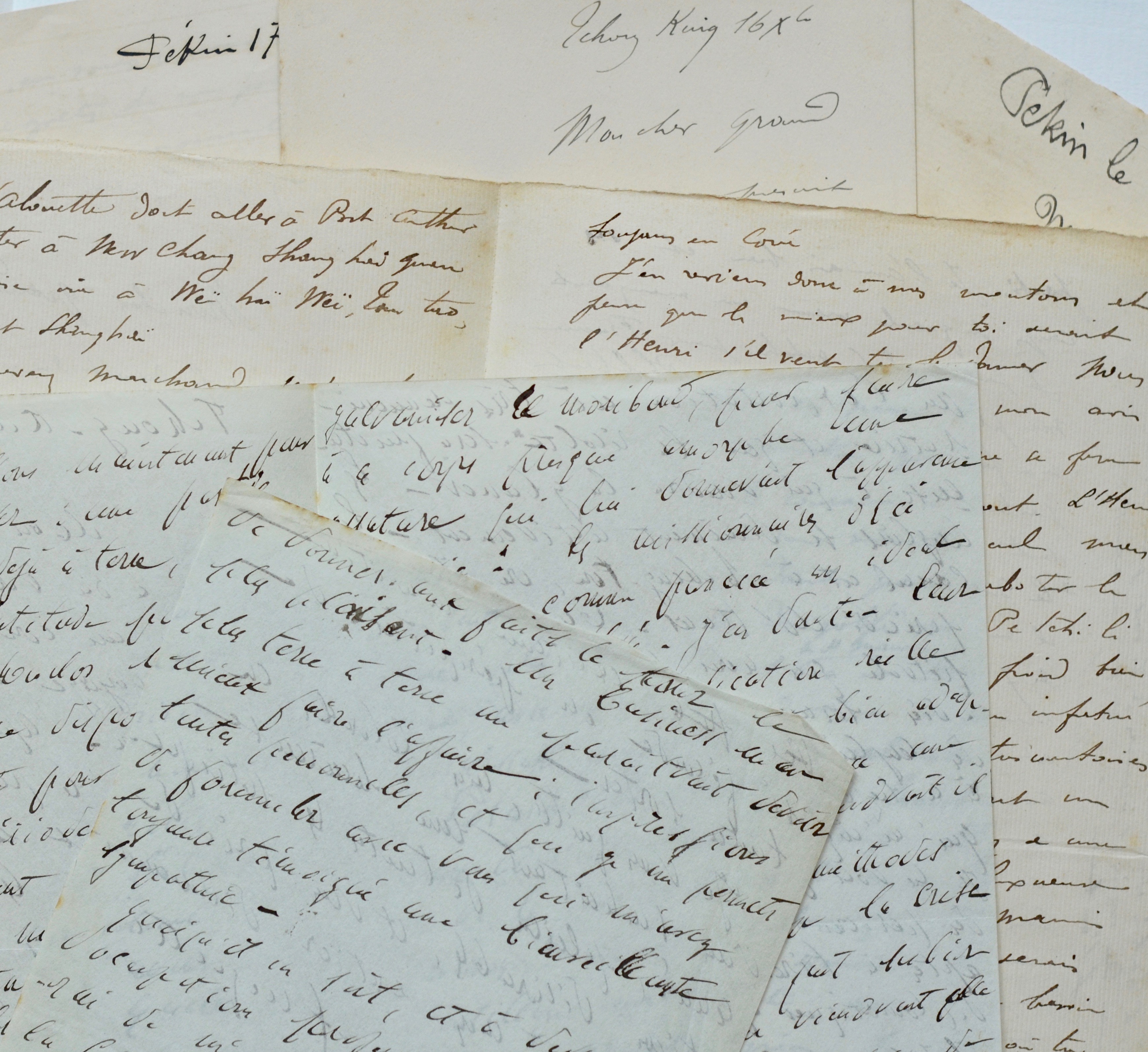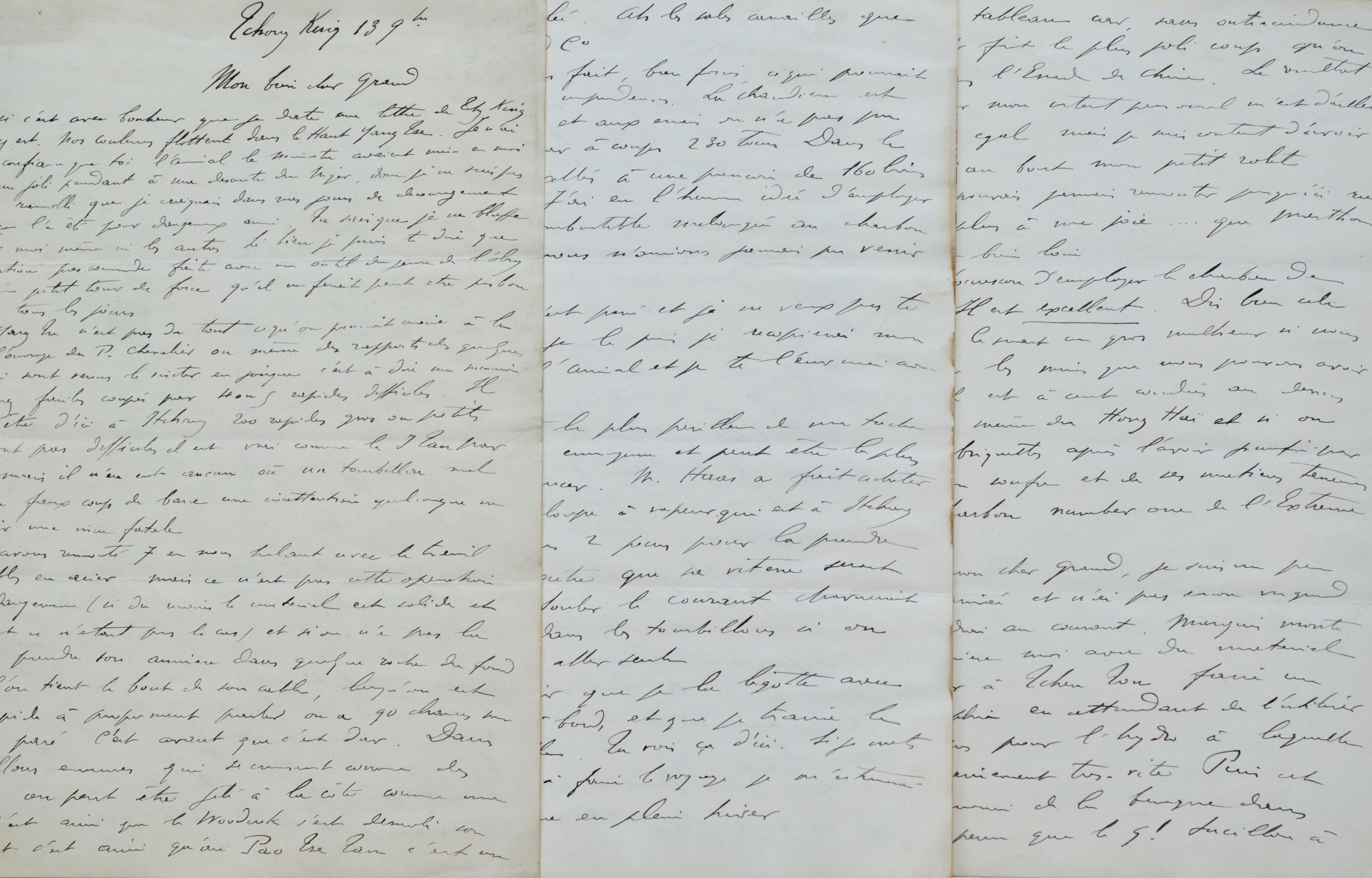Account of the exploration of the upper Yang-tse-kiang by Hourst.
Account of the exploration of the upper Yang-tse-kiang by Hourst.
Fascinating account of the ascent of the Blue River to Chongqing, over 3200 kilometers through regions very difficult to access, the story of which he will publish in 1904, at Plon: In the rapids of the Blue River - Voyage of the first French gunboat on the upper Yang-tse-kiang by Lt Hourst.
Leaving on October 3, the Olry (a 37-meter steam vessel built by Farnham, bought in China) quickly encountered enormous difficulties in navigating the unpredictable tumults of this legendary river. After a grueling ascent, where it was necessary to cross a succession of rapids and gigantic whirlpools, the boat and its crew arrived on November 3 at Pan-Téou. Hourst takes up the pen and writes a first long letter (5 pp. ½), alive, recounting the difficulties encountered in particular in crossing the Ichtang rapids and the passage of the Ié-t'an in front of the crew of the Kinsha, an English ship which preceded them and had just run aground, predicting the same spell.
“My interpreter, who understands English, heard them laughing at us among themselves during the two and a half hours that we remained dying in full rapid. We were able to hang up these mooring lines 3 times, to have some that cut like knives. My officers and men all had blood on their hands and clots got on the winch […]”.
Ten days later, the ship arrives at the end of its mission, Chongqing. Hourst immediately takes up the pen to tell his friend, in a very long letter (7 pp. ½ in-4), the adventures of the journey.
“You can imagine whether it is with happiness that I date my letter from Tchong King. Finally, here we are. Our colors float in the Upper Yangtze. I haven't betrayed the trust you, the admiral, and the minister placed in me. I gave a nice counterpart to my descent from Niger […]. For hard it was, for dangerous too. You know that I don't like to bluff myself or others, so I can tell you that this cumbersome navigation made with a tool like the Olry is a little tour de force that might not be good start over every day.
The Upper Yangtze is not at all what one might think from reading the work of Father Chevalier or even the reports of the few officers who came to visit it by junk, that is to say a succession of Fairly easy reaches cut by 4 or 5 difficult rapids. There are perhaps 200 large or small rapids from here to Itchang, not all of them are difficult, it is true, like the It'an for example, but there is none where a badly appreciated whirlpool, a false blow bench, any inattention, cannot have a fatal outcome.
We encountered 7 of them while hauling ourselves with the winch on the steel cables but it is not this operation which is dangerous (if at least the material is solid and unfortunately it was not the case) and if we do not you don't have the jinx to catch your rear in some bottom rock, when you hold the end of your cable, when you're in the rapid itself, you have a 90 out of 100 chance of being parried. It's before that it's hard. In these enormous whirlpools which hollow out like jaws, one can be thrown to the coast like a straw. That's how the Woodcock was demolished, and that's how at Pao Tsé Tan it's a miracle if we didn't get torn to pieces on a rock. We passed it at 1 meter doing a complete spin. Not a cry, not a phew on board. My little crew is admirable […]”. End of the first page of this very long letter written on the spot.
A third letter was written a month later (Tchang-King, December 16, 2 pp. in-8) and a fourth, without place or date (4 pp. in-8) can be dated to his return to Shanghai (second half of 1902, evoking his return to France).
A torrent of ingratitude awaited him on his return: disavowed by his superiors for his Yang-tse-kiang expedition, he was retired in 1905.



